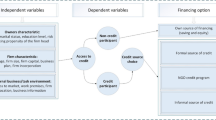Abstract
The relocation in coal mined-out areas has a significant impact on migrants’ livelihoods. The present research analyses the factors influencing the ecological migrants’ livelihoods by applying the sustainable livelihood framework based on the sample data collected from key state-owned coal mined-out areas. The structural equation model was employed to explore the main influencing factors of ecological migrants’ livelihoods from the human assets, physical assets, natural assets, social assets and financial assets aspect. Empirical findings show that human assets, natural assets and financial assets are positively associated with livelihoods of ecological migrants in coal mined-out area, while physical assets and social assets are positively associated with livelihoods after relocation with a relatively weaker trend. In addition to this, the present study shows that various other factors including education and skill of householder, number of labours, frequency of family members attending the training, household housing area, self-employed business value and relocation compensation funds of migrants are also positively associated with livelihoods of ecological migrants in coal mined-out areas. The results of present appraisal recommend that policy implications should include further enhancing the quality of human assets, encouraging migrants to run self-employed businesses and enriching the cultural and social services for migrants to enhance the livelihoods of ecological migrants of coal mined-out areas.

Similar content being viewed by others
References
Adam, A. B., Owen, J. R., & Kemp, D. (2015). Households, livelihoods and mining-induced displacement and resettlement. Extractive Industries and Society, 2(3), 581–589. https://doi.org/10.1016/j.exis.2015.05.002.
Ahmed, N., Allison, E. H., & Muir, J. F. (2008). Using the sustainable livelihoods framework to identify constraints and opportunities to the development of freshwater prawn farming in southwest Bangladesh. Journal of the World Aquaculture Society, 39(5), 598–611. https://doi.org/10.1111/j.1749-7345.2008.00198.x.
Ashley, C., Carney, D., Ashley, C., & Carney, D. (1999). Sustainable livelihoods: Lessons from early experience (pp. 226–227). UK: Department for International Development.
Cernea, M. (1997). The risks and reconstruction model for resettling displaced populations. World Development, 25(10), 1569–1587. https://doi.org/10.1016/S0305-750X(97)00054-5.
Cernea, M. M. (2006). Re-examining “displacement”: A redefinition of concepts in development and conservation policies. Social change, 36(1), 8–35. https://doi.org/10.1177/004908570603600102.
Chambers, R., & Conway, G. R. (1992). Sustainable rural livelihoods: Practical concepts for the 21st century. IDS Discussion Paper No. 296. Brighton: Institute of Development Studies.
Hemedi, M., Saeed, M., & Kengo, D. (2013). Resettling displaced people in a coastal zone mining project: Evaluating the agricultural and land use potential of the Proposed resettlement site: A case of titanium mining in Kenya. Remote Sensing of Environment, 3(4), 15–18.
Hooper, D., Coughlan, J., & Mullen, M. R. (2008). Structural equation Modeling: Guidelines for determining model fit. Electronic Journal on Business Research Methods, 6(1), 141–146.
Li, J., & Chen, C. (2010). The research of the mountain households residential relocation on the basis of village residential field and power. Economic Geography, 30, 1164–1169.
Li, G., & Shi, H. (2015). The payment of grain to green project, the behavior choice of peasants and their gains and losses. China Population, Resources and Environment, 5, 152–161.
Lindenberg, M. (2002). Measuring household livelihood security at the family and community level in the developing world. World Development, 30(2), 301–318. https://doi.org/10.1016/S0305-750X(01)00105-X.
Masud, M. M., Kari, F., Yahaya, S. R. B., & Al-Amin, A. Q. (2016). Livelihood assets and vulnerability context of marine park community development in Malaysia. Social Indicators Research, 125(3), 771–792. https://doi.org/10.1007/s11205-015-0872-2.
McDonald, R. P., & Ho, M. H. (2002). Principles and practice in reporting statistical equation analyses. Psychological Methods, 7(1), 64–82.
Owen, J. R., & Kemp, D. (2015). Mining-induced displacement and resettlement: A critical appraisal. Journal of Cleaner Production, 87(1), 478–488. https://doi.org/10.1016/j.jclepro.2014.09.087.
Pham, P. X., Tran, N. T. B., Duyen, P. N., & Lan, T. H. P. (2013). Impact of aquatic resources on livelihood of the people lower mekong basin - a case study in phu loc, khanh an communes, tan chau, an phu district, an giang province. Heythrop Journal, 49(2), 322–325.
Resane, K. T. (2015). The mining-induced displacement and resettlement: The church as a leaven and ecclesiology in context’s response. HTS Teologiese Studies/Theological Studies. https://doi.org/10.4102/hts.v71i3.2967.
Sen, A. (1991). Welfare, preference and freedom. Journal of Econometrics, 50(1–2), 15–29. https://doi.org/10.1016/0304-4076(91)90087-T.
Terminski, B. (2012). Applying the concept of human security to research on the consequences of mining-induced displacement and resettlement (pp. 124–136). New York: Social Science Electronic Publishing. https://doi.org/10.2139/ssrn.2177747.
Wang, J., Wang, X., & Jiang, B. (2011). Structural equation modeling: Methods and applications. Beijing: Higher Education Press.
Wang, C., Zhang, Y., Yang, Y., Yang, Q., Kush, J., Xu, Y., et al. (2016). Assessment of sustainable livelihoods of different farmers in hilly red soil erosion areas of southern china. Ecological Indicators, 64, 123–131. https://doi.org/10.1016/j.ecolind.2015.12.036.
Wu, R. (2013). The test method based on the analysis of structural equation model. Beijing: Peking University Press.
Yuan, K. H. (2005). Fit indices versus test statistics. Multivariate Behavioral Research, 40(1), 115–148. https://doi.org/10.1207/s15327906mbr4001_5.
Acknowledgements
We thank local governments for providing support for our field work. In addition, we sincerely appreciate the local households who provided valuable data. We also gratefully acknowledge the help of four anonymous reviewers for their valuable comments on a previous version of the manuscript.
Funding
This research was funded by the Ministry of Education Humanities and Social Sciences Subject of China (Grant No. 16YJCZH131) and the Shanxi Province Philosophy and Social Science Planning Foundation.
Author information
Authors and Affiliations
Corresponding author
Ethics declarations
Disclosure of potential conflicts of interest
All authors have read and approved the final manuscript. The authors have no conflict of interest.
Research involving human participants and/or animals
For this type of study, formal consent is not required.
Informed consent
Informed consent was obtained from all individual participants included in the study.
Ethics approval
This article does not contain any studies with human participants or animals performed by any of the authors.
Rights and permissions
About this article
Cite this article
Xue, Y., Huang, L. Factors influencing the livelihoods of ecological migrants in coal mined-out areas in China. Environ Dev Sustain 21, 1853–1867 (2019). https://doi.org/10.1007/s10668-018-0106-2
Received:
Accepted:
Published:
Issue Date:
DOI: https://doi.org/10.1007/s10668-018-0106-2




